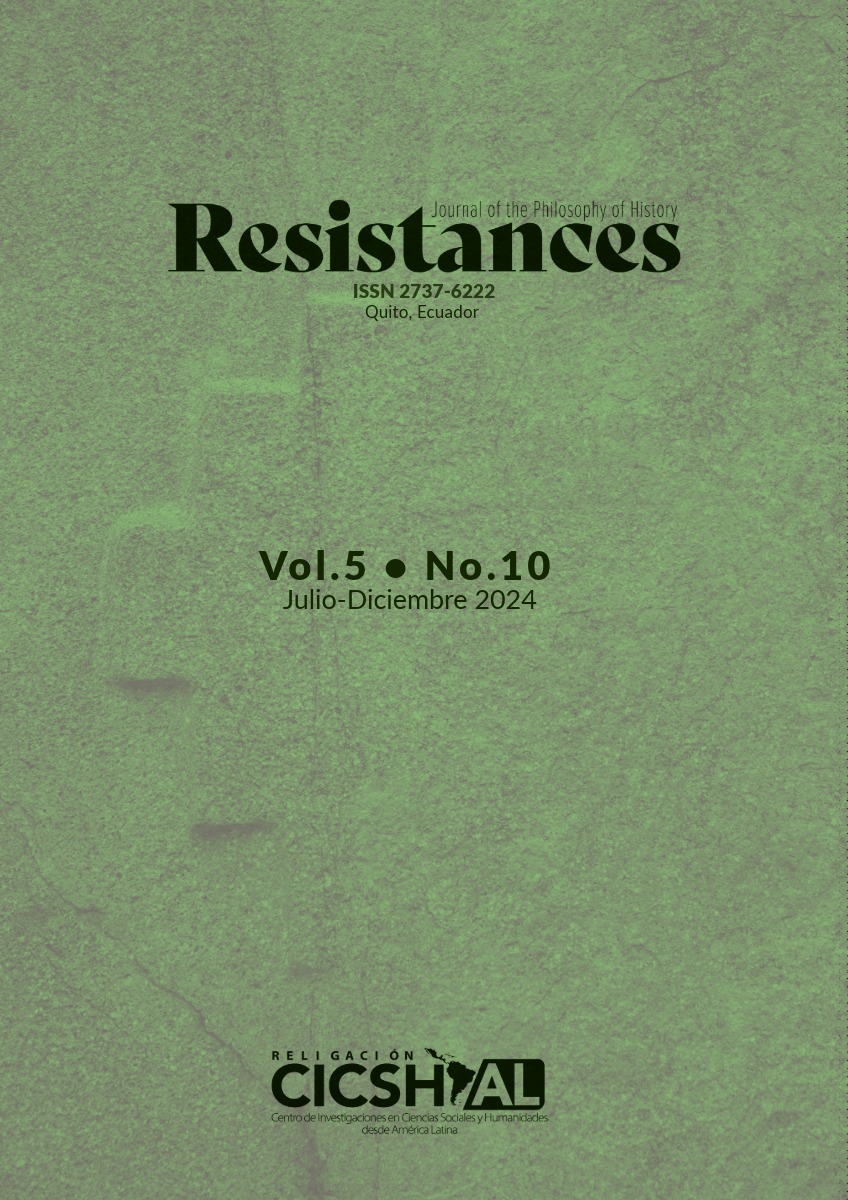Resumo
This article examines the impact of deepfakes in a democratic context, focusing on how these digital manipulations can undermine public trust, manipulate political information, interfere with electoral processes, and exacerbate polarization. It analyzes the evolution of deepfakes from their inception to their current sophistication, illustrating how artificial intelligence technology has enhanced their realism and made them more difficult to detect. The paper examines the harmful effects of deepfakes on political representation, polarization, and public perception. It draws on case studies in France and Colombia. The paper argues for regulatory strategies that go beyond regulatory measures and promote preventive approaches and transparency in the use of artificial intelligence technologies. It underlines the crucial role of cooperation with platforms and the implementation of educational and technological policies that promote a critical understanding of digital media among citizens. This comprehensive approach aims to protect democratic values and ensure the responsible use of artificial intelligence.
Referências
AFP Colombia. (2024, 08 de marzo). Video de la televisión francesa fue manipulado para sugerir un complot para asesinar a Macron. AFP. https://factual.afp.com/doc.afp.com.34KY79H.
Akbar, M., Suaib, M., y Hussain, M. S. (2022). Analysis of Deep-Fake Technology Impacting Digital World Credibility: A Comprehensive Literature Review. International Journal of Computer and Information Technology, 11(2).
Bellamy, R. (2020). Lies, Deception and Democracy. Biblioteca della libertà, 54(225-226), 1-22. https://doi.org/10.23827/BDL_2019_3_2
Chesney, B., y Citron, D. (2019). Deep Fakes: A Looming Challenge for Privacy, Democracy, and National Security. California Law Review, 107(1753). https://doi.org/10.15779/Z38RV0D15J
Chitra, U., y Musco, C. (2020). [Conferencia] Analyzing the Impact of Filter Bubbles on Social Network Polarization. Proceedings of the 13th International Conference on Web Search and Data Mining. https://doi.org/10.1145/3336191.3371825
Commaille, J. (2012). À quoi nous sert le droit? Gallimard.
Crootof, R. (2019). Regulating new weapons technology. En R. T. P. Alcala, & E. T. Jensen, (eds.). The impact of emerging technologies on the law of armed conflict (pp. 3–26). Oxford University Press. https://doi.org/10.1093/oso/9780190915322.003.0001
Crozier, M. J., Huntington, S. P., y Watanuki, J. (1975). La crisis de la democracia: Informe sobre la gobernabilidad de las democracias a la Comisión Trilateral. University Press.
Deffains, N., y Thierry, J. B. (2019). Fausses nouvelles. Répertoire IP/IT et communication, (4).
Fallis, K., Rajtmajer, S., y Obradovich, J. (2021). Political Deepfakes Are As Credible As Other Fake News and People are Concerned. Frontiers in Communication, 6. https://doi.org/10.3389/fcomm.2021.681106
Farid, H. (2021). Detecting and Combating Deep Fakes. The Journal of Intelligence, Conflict, and Warfare, 3(3), 83–87. https://doi.org/10.21810/jicw.v3i3.2752
Foro Económico Mundial. (2024, 19 de enero). The Global Risks Report 2024. https://lc.cx/pt6iwW
Gunatilleke, G. (2020). Justifying Limitations on the Freedom of Expression. Human Rights Review, 22, 91-108. https://doi.org/10.1007/s12142-020-00608-8
Harris, D. (2019). Deepfakes: False Pornography Is Here and the Law Cannot ProtectYou. Duke Law & Technology Review, 17(1), 99-127.
Huang, K. (2023, 08 de abril). Why Pope Francis Is the Star of A.I.-Generated Photos. The New York Times. https://lc.cx/ZMPJqj
Januel, P., y Babonneau, M. (2019, 21 de mayo). Loi Fake news: première application du référé. Dalloz Actualité. https://lc.cx/s2kZcj
José Rabelo França, A. y Costa Camarão, F. (2022). Regulation of fake news: National and international regulations to fight false news. Revista Gênero E Interdisciplinaridade, 3(03), 264–298. https://doi.org/10.51249/gei.v3i03.826
Kirchengast, T. (2020). Deepfakes and image manipulation: criminalisation and control. Information & Communications Technology Law, 29, 308–323. https://doi.org/10.1080/13600834.2020.1794615.
Marsden, C., Meyer, T., y Brown, I. (2019). Platform values and democratic elections: How can the law regulate digital disinformation? Computer Law & Security Review, 36. https://doi.org/10.1016/j.clsr.2019.105373
Matthews, R. (2005). The myth of punitiveness. Theoretical Criminology, 9(2), 175-201. https://doi.org/10.1177/1362480605051639.
McKay, S., & Tenove, C. (2021). Disinformation as a Threat to Deliberative Democracy. Political Research Quarterly, 74(3), 703-717. https://doi.org/10.1177/1065912920938143
Mediatropy. (s.f.). How AI Deepfakes are Transforming the World of Marketing and Advertising. Mediatropy. https://lc.cx/Z0uVFw
Merriam-Webster. (s.f.). What is a Deepfake? Deepfake Meaning and Examples. https://lc.cx/3PVIIq
Moskalenko, S., & Romanova, E. (2022). Deadly Disinformation: Viral Conspiracy Theories as a Radicalization Mechanism. The Journal of Intelligence, Conflict, and Warfare, 5(2), 129–153.
O’donnell, G. (2007). The Perpetual Crises of Democracy. Journal of Democracy, 18(1), 11–5. https://doi.org/10.1353/JOD.2007.0012.
Ost, F. (2016). À quoi sert le droit? Usages, fonctions, finalités. Larcier.
Paterson, T., y Hanley, L. (2020). Political warfare in the digital age: cyber subversion information operations and ‘deep fakes’. Australian Journal of International Affairs, 74(4), 439-454. https://doi.org/10.1080/10357718.2020.1734772
Pawelec, M. (2022). Deepfakes and Democracy (Theory): How Synthetic Audio-Visual Media for Disinformation and Hate Speech Threaten Core Democratic Functions. Digital Society, 1(19). https://doi.org/10.1007/s44206-022-00010-6
Pulido Daza, N. J., Arce, J. C., y Silva Bohórquez, A. E. (2013). El derecho a la información en Colombia: Una aproximación al estado de la información desde el derecho y los archivos. Equidad Desarrollo, (19), 161-190.
Reins, L. (2019). Regulating new technologies in uncertain times: Challenges and opportunities. In L. Reins, (ed.). Regulating new technologies in uncertain times (pp. 19-28). Springer. https://doi.org/10.1007/978-94-6265-279-8_2
Reuters Fact Check. (2024, 21 de marzo). Macron dancing clip is altered 80s nightclub footage. Reuters. https://lc.cx/j5TSyz
Silbey, J. y Hartzog, W. (2019). The Upside of Deep Fakes. Maryland Law Review, 78, 960.
Somers, M. (2020, 21 de julio). Deepfakes, explained. MIT Sloan. https://lc.cx/1zdiPj
Suárez, J. (2023, 24 de octubre). Posibles audios creados por IA llegan a las elecciones regionales, ¿qué tan factible es identificarlos? Colombiacheck.
Vokinger, K., & Gasser, U. (2021). Regulating AI in medicine in the United States and Europe. Nature Machine Intelligence, 3, 738-739. https://doi.org/10.1038/s42256-02100386-z
Webber, G. (2019). Proportionality and Limitations on Freedom of Speech. Law & Society: Public Law–Constitutional Law e Journal, 173–192. https://doi.org/10.1093/OXFORDHB/9780198827580.013.11
Woolley, S. C., y Howard, P. N. (2018). Conclusion: Political parties, politicians, and computational propaganda. In S. C. Woolley, & P. N. Howard, (eds.). Computational propaganda: Political parties, politicians, and political manipulation on social media (pp. 241–248). Oxford Academic. https://doi.org/10.1093/oso/9780190931407.003.0011
Zaman, F. (2022). Mechanisms of Digital Authoritarianism: The Case of Bangladesh. SAIS Review of International Affairs, 42, 101 - 85. https://doi.org/10.1353/sais.2022.0012
Zech, H. (2021). Liability for AI: public policy considerations. ERA Forum, 22, 147–158. https://doi.org/10.1007/s12027-020-00648-0.

Este trabalho está licensiado sob uma licença Creative Commons Attribution-NonCommercial-NoDerivatives 4.0 International License.
Copyright (c) 2024 Efraín Fandiño López





